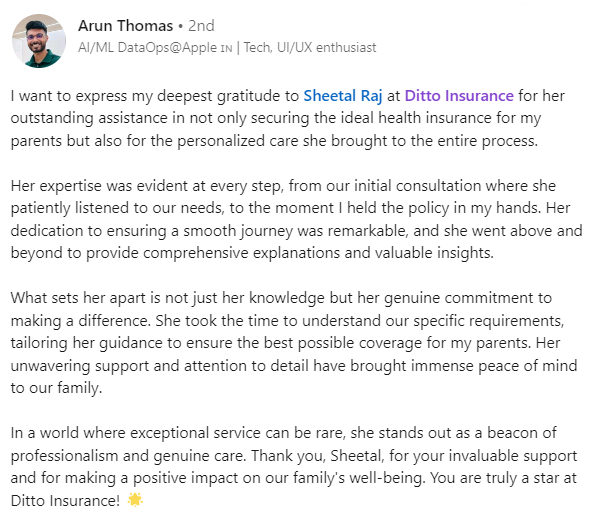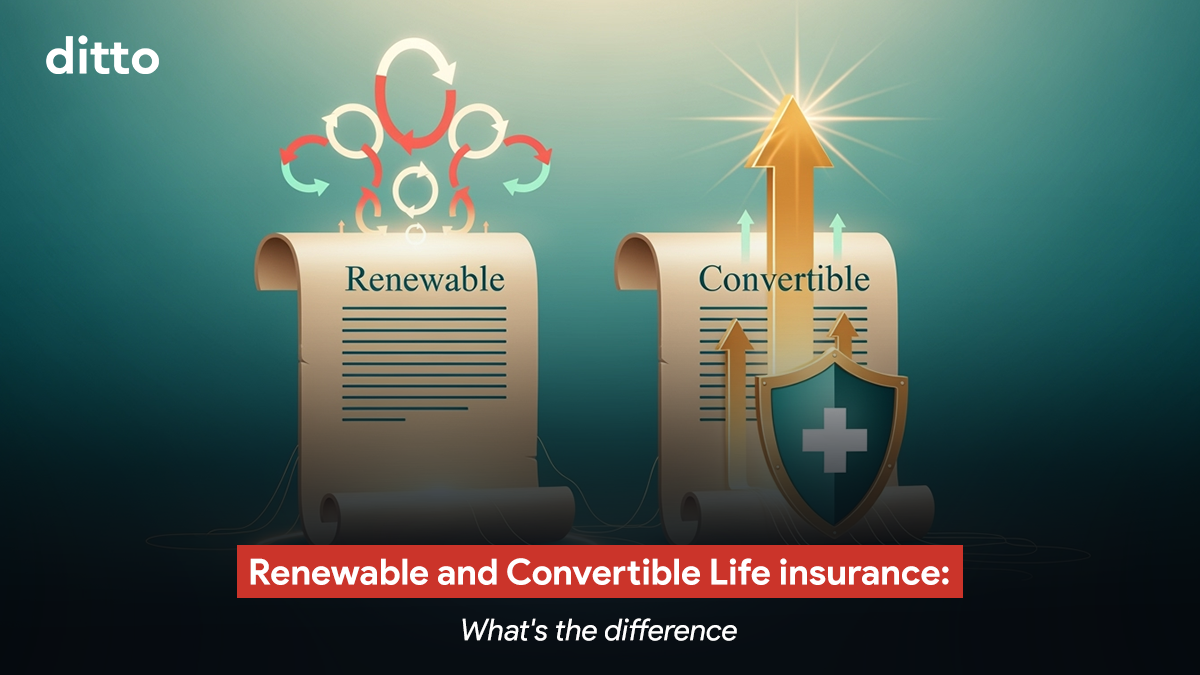Not sure what to do when your term life insurance nears its end? You’re not alone. Your insurance needs may shift as life changes, whether through growing responsibilities, new financial goals, or health uncertainties. That’s when understanding your options becomes essential. The good news is, you don’t always have to start over from scratch.
This guide breaks down the differences between renewable and convertible life insurance. You’ll learn how each option works, when to choose one, and how to adapt your coverage without medical exams. It’s all about keeping your protection in sync with your life.
Still unsure about your life coverage options? Book a free call with us and let our experts help you to make the right choice.
| What is Renewable Life Insurance? Renewable term life insurance is a term policy that lets you extend coverage when the term ends without undergoing a new medical exam. The insurer guarantees you can keep the policy, but the premium goes up at each renewal because it’s recalculated based on your current age. For such policies, you buy coverage for a short term, like 1, 5, or 10 years. When it ends, you can renew it without medical tests. The death benefit stays the same, but premiums rise with age. Renewals are allowed until a set age, usually between 65 and 95. Renewable life insurance lets you extend your term coverage beyond the initial period, usually with increased premiums, while Convertible life insurance allows switching to permanent coverage. |
| TAKE NOTE: In India, insurers offer you the option to lock in your term coverage up to age 85 with some extending up to 99 or 100 also with fixed premiums, so no renewals are required. This kind of long-term security, global coverage, and guaranteed premium rates make Indian term plans popular for NRIs looking for stable, lifelong protection. |
How Do Renewable Term Plans Work?
A renewable term life policy gives you short-term coverage, usually for 1, 5, or 10 years, and the option to renew it when the term ends, without any new medical exams.
Let's take some specific examples:
- US: State Farm Select Term offers 10, 20, or 30-year terms, renewable annually up to age 95. Legal & General OP Term allow renewals till age 95, with rising premiums.
For instance, if you bought $500,000 cover at 35 for 20 years, after expiry you can keep the $500,000 death benefit, but your renewal premium at 55 will be much higher.
- Singapore: Singlife Elite Term II is renewable every 5 or 10 years until age 89.
- Canada: RBC YourTerm auto-renews after the initial term, no medicals needed.
- UK: Renewable term plans allow renewals in 5–10 year blocks, usually till age 75.
However, renewable term insurance in India is mainly seen in group plans and government schemes, not regular individual term policies.
- Group Life Insurance: Common among employers or associations. For example, LIC’s One-Year Renewable Group Term Assurance is renewed annually. Private insurers also offer similar group plans.
- Government Schemes: The Pradhan Mantri Jeevan Jyoti Bima Yojana (PMJJBY) offers ₹2 lakh life cover for one year, renewable yearly at a flat premium.
- Retail Term Plans: Most individual term policies in India are fixed-tenure, like 10, 20, or 30 years. They don’t usually offer a guaranteed renewal option. Once the term ends, if you need extended coverage you must buy a new policy, undergo fresh medicals, and pay higher premiums.
| DID YOU KNOW? HDFC Life’s Click 2 Protect Supreme offers a unique “Renewability at Maturity” feature, letting you extend your term life cover up to 5 times after the original term ends. Unlike regular term plans that expire, this allows you to continue protection later in life. However, extensions require fresh medical checks (Underwriting), and premiums will be higher based on age and extension length. This option is only available under Regular Pay – Life or Life Plus (not with add-ons like ROP, WOP, or Spouse Cover). Not the most flexible when compared with global counterparts. |
What is Convertible Life Insurance?
Convertible term life insurance allows you to switch your term policy to a permanent one (like whole life or universal life) without taking a new medical exam. This means your health won’t affect your ability to get lifelong coverage later. While your new premium will be higher (since permanent plans cost more and are priced at your current age), your insurability stays protected.
Convertibility matters when your life goals change. Perhaps at 30, you wanted lifelong coverage, but by 40, you prefer a plan that matures at 60 with a lump sum for retirement or your children’s education.
How It Works (with Real Examples):
When you buy a convertible term plan, the insurer gives you a conversion window during which you can switch.
- Prudential (US) – Term Essential: You can convert at any time during the level-premium period or up to the policy anniversary after age 65, whichever comes first. The insurer guarantees at least 5 years of convertibility, and you can even convert part of the coverage.
- RBC (Canada) – YourTerm: You can convert all or part of your term policy to a permanent one without any medical checks, until the policy anniversary closest to age 71.
What Happens at Conversion:
You choose from the insurer’s list of eligible permanent plans, and your health class ( read medical profile underwriting) from the term policy is carried over, so you don’t need to requalify. However, your new premium is based on your age at the time of conversion, and the features of the new policy, like cash value, guarantees, or dividends, will apply from there.
This option is great if you want low-cost coverage now, with the flexibility to switch to lifelong protection later, especially if your health changes.
While the concept of convertible term plans exists in India, it’s not standard in most modern term plans offered by insurers. Some educational materials mention switching from term to whole life or endowment. Still, most Indian insurers don’t provide a built-in conversion feature like those commonly seen in the US or Canada.
| DID YOU KNOW? Kotak's Term Life Insurance plan offers the flexibility to convert your term plan into any other Kotak Life policy without medical tests, as long as you have at least 5 years left before your term ends. This means: a) No health loadings or extra premiums will be applied at conversion. b) You can pick from any eligible Kotak Life product available at that time (excluding term plans). c) Your new plan will follow the premium rates, sum assured limits, and eligibility rules that apply when you exercise the option. |
What is the Difference Between Renewable life insurance and convertible life insurance?
Renewable and Convertible Life insurance do not require any medical checkup to use the facility, but the two products differ in certain aspects. Here’s a simple comparison of renewable vs convertible life insurance to help you understand the key distinctions:
| Feature | Renewable Life Insurance | Convertible Life Insurance |
| Purpose | Extend term coverage after expiry | Switch from term to permanent life insurance |
| Premiums After Change | Increases with age at each renewal | Increases based on age at time of conversion |
| Type of Coverage After Change | Remains term life | Becomes permanent life (whole/universal) |
| When to Use | You want short-term extension of coverage | You want lifelong coverage or cash value benefits |
| Flexibility | Extend same policy for another term | Upgrade policy to a different kind |
| Best For | People needing temporary continued coverage | People whose financial goals have changed |
| Did You Know? India Post’s Convertible Whole Life Assurance plan offers the insured the flexibility to convert into an Endowment Assurance policy after 5 years. You get life cover up to ₹50 lakh, guaranteed bonuses (₹85 per ₹1,000 annually if not converted), plus loan options after 4 years. |
Ditto’s Take on Renewing or Converting your Life coverage
In the Indian market, renewable term plans are unreliable, rarely available, and when they are, premiums rise sharply, making them impractical. Convertible term plans sound great in theory, but are not commonly offered in retail term policies.
At Ditto, we recommend choosing a longer policy term upfront. Extending your coverage by 5–10 years usually increases premiums by just 10–20%, but provides you with long-term peace of mind.
If you hit financial independence early, you can always stop paying, no pressure. But relying on renewals or conversions later can be risky, too. It’s better to lock in a long-term policy (to age 85 or beyond) now and stay covered without surprises.
Why Talk to Ditto for Your Life Coverage?
At Ditto, we’ve assisted over 7,00,000 customers with choosing the right insurance policy. Why customers like Arun below love us:

✅No-Spam & No Salesmen
✅Rated 4.9/5 on Google Reviews by 5,000+ happy customers
✅Backed by Zerodha
✅100% Free Consultation
Key Takeaways
Both renewable and convertible life insurance policies offer unique flexibility, depending on your life stage and future goals.
- Renewable life insurance is a practical choice if you want to temporarily extend your term coverage, especially when your future health is uncertain. It allows continued protection without undergoing a new medical exam.
- On the other hand, if you anticipate changes in your financial goals and want long-term benefits like lifetime coverage, cash value accumulation, or estate planning, a convertible term policy lets you upgrade without starting over.
Understanding the difference between the two can help you choose the right path and adapt your coverage as your needs grow and change.
Still unsure about your life coverage options? Book a free call with us and let our experts help you to make the right choice.
FAQs
Can I switch to another insurer for renewable term insurance?
No, you can't switch insurers under the renewable clause. Renewability only applies to continuing your existing policy with the same insurer, without a medical test. To move to a new insurer, you must apply for a fresh policy, undergo medical checks, and pay new-age-based premiums.
Does converting a term policy increase my premium?
Yes, converting increases your premium, as permanent life insurance costs more. However, you gain lifelong coverage without undergoing a medical exam.
When should I convert my term life policy?
Convert when your income grows, you have new dependents, or your term nears expiry. Don't delay, conversion is age-restricted, usually ending at 60 or 65.
Will my coverage amount stay the same after renewal?
Yes, your sum assured typically remains unchanged. However, premiums increase with age, and renewals may be restricted after a certain age.
Is it better to convert or renew my life insurance?
Renew for short-term needs without medical exams. Convert if you want lifelong protection, cash value, or estate planning benefits.
Last updated on:







